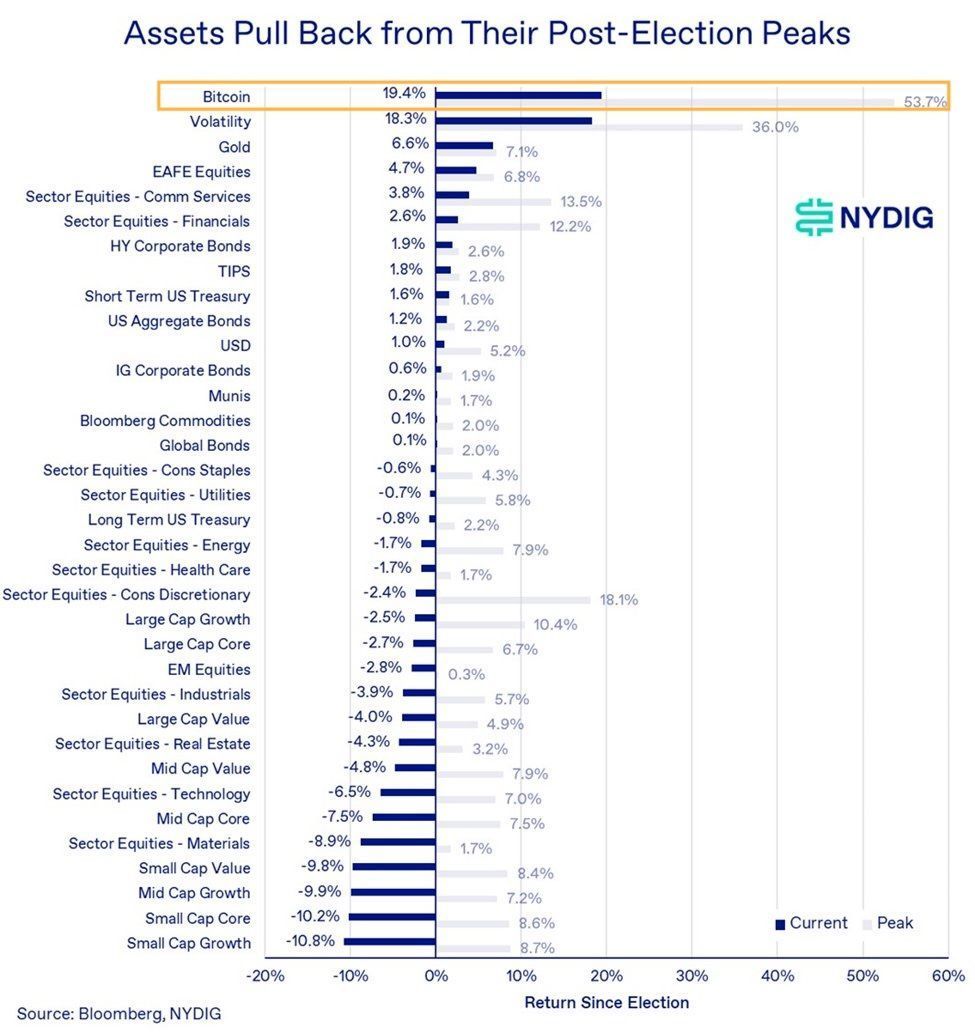According to a report by Citigroup, the performance of Bitcoin during recent financial turbulence shows its evolving status as an asset class.
The analysts at Citigroup (Citi) emphasize that this trend warrants close examination, especially considering Bitcoin’s previous correlations with equities.
Bitcoin Performance During Financial Stress
Matthew Sigel, Head of Digital Assets Research at VanEck, highlighted CITI’s report in a post, noting how Bitcoin maintained stability during critical market events.
"Bitcoin's performance during certain financial-stress periods – ie, SVB turmoil, Sept 23 US bond term-premium rise, and recent market volatility – warrants attention as a potential indicator of its maturing adoption and purpose as an asset class." – Citi pic.twitter.com/8ixp44fg3T
— matthew sigel, recovering CFA (@matthew_sigel) April 25, 2025
Despite facing several macroeconomic shocks, including tariff-related volatility and broader market instability, Bitcoin has outpaced key indices such as the S&P and EuroStoxx on a volatility-adjusted basis.
According to CITI, the digital asset has exceeded macro-based price expectations by over 10% since early March, signaling a potential risk premium independent of conventional market drivers.
Bitcoin’s Resilience
For context, during the March 2023 crisis surrounding Silicon Valley Bank (SVB), Bitcoin prices hovered above $21,000, ultimately closing the month above $28,000.
This occurred while traditional asset classes faced significant declines. Additionally, in September 2023, amid the rise in US bond term premiums, Bitcoin opened at approximately $25,000 and closed the month just above $26,000. These instances highlight Bitcoin’s capacity to perform reliably under financial strain.
Furthermore, recent market volatility driven by President Trump’s tariffs led to Bitcoin displaying consistent performance. Although it fell briefly below $75,000, it has since rebounded to levels above $90,000, outperforming traditional stocks. Particularly, even with the recent market volatility, Bitcoin is still leading all other assets in performance since the U.S. election in November.
CITI suggests that these movements may indicate the presence of a Bitcoin-specific risk premium, partly influenced by a strengthening gold market and a weakening US dollar.
Stable Bitcoin ETF Inflows Amid Uncertainty
According to CITI, Bitcoin ETF inflows have remained stable, contrasting sharply with the outflows seen in Ethereum ETFs. Despite recent market turbulence, Bitcoin ETF flows have not experienced a significant decline.
CryptoQuant analyst Maartunn echoes this sentiment, stating that external factors, including ETF flows and futures market interests, have largely driven price increases.
Maartunn also notes that Bitcoin’s price surge appears more closely tied to institutional movements rather than on-chain demands.
Mixed On-Chain and Off-Chain Metrics
As the market evolves, on-chain and off-chain metrics exhibit mixed signals. CITI reports that the stablecoin market cap continues to grow robustly, even amid volatility.
Meanwhile, Layer 1 Ethereum activity shows an upward trend, though Layer 2 users have declined. Bitcoin activity has also registered increases, albeit temporarily.
DisClamier: This content is informational and should not be considered financial advice. The views expressed in this article may include the author's personal opinions and do not reflect The Crypto Basic opinion. Readers are encouraged to do thorough research before making any investment decisions. The Crypto Basic is not responsible for any financial losses.




